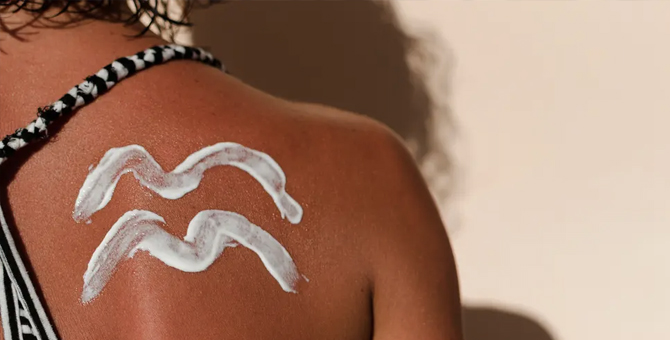Sunburn: it happens to the best of us. It’s a truly heinous thing, leaving its victims with painful burns, nasty boils, dry flakes and a significantly higher susceptibility to developing skin cancer. Maybe your skin is hyper-sensitive to the ol’ UV even with SPF50 on. Or, maybe you’re skipping the sunscreen cause the prospect of reapplying regularly is too tedious (you just know you’re just going to wash it off in the pool in a second).
READ: Sunscreen 101: Your guide to all things SPF (and PA++++)
Either way, if you are unfortunate enough to find yourself red and flaky, you may want to check this guide to get your skin back in tip-top shape. Behold, the do’s and don’ts of treating a sunburn:
DO: Cool your skin down
Slathering aloe straight from the plant is always a good shout. Other than that, a cold compress works a treat too. Just regular ice will suffice, but if you want, you could either freeze some fresh aloe and apply it to the burn, or get fancy and soak the area in cold green tea.
DON’T: Trap the heat
Avoid anything oily like petroleum jelly or baby oil. This seems like a no-brainer but you’d be surprised; a surprisingly common home remedy that is worryingly widely practised (and definitely doesn’t work) is to put butter on a sunburn. Please don’t do this—you’ll end up trapping the heat in your skin and making things worse.
DO: Stay hydrated
Unfortunately, when you get a sunburn (or any burn for that matter), the fluid in your body is drawn to the skin’s surface which is what leaves you dehydrated. So, keep a tub of water-based or aloe-based (no oil-based products, per favore!) moisturiser handy and make sure you’re drinking enough water. In addition to helping your skin recover faster, it’s also just generally good life advice.
DON’T: Use the wrong products
You’ll want to read the ingredients of any products you buy. For instance, many sunburn relief products contain numbing agents that can lead to irritation. Further, we specified using aloe straight from the plant because a lot of the gels you find in pharmacies are mixed with alcohols, dyes and fragrance which are a no-no for your sensitive skin.
DO: Take cool (preferably cold!) showers
The aim is to remove trapped heat and prevent further irritation to your damaged skin—cool showers are non-negotiable. If you’re particularly extra, you could also soak in an ice bath for a few minutes; also known as cold therapy, it has many other benefits outside of treating your sunburn such as reduced inflammation and muscle soreness.
DON’T: Take long, hot showers
Do we really need to explain why this is a bad idea? Just don’t do it. Oh, and while you’re at it, also avoid hot baths, saunas, jacuzzis—the lot.
DO: Use light, breathable clothes
Really, the more shapeless, the better. Plus, opt for natural fibres like cotton and linen that allow heat to escape.
DON’T: Use tight clothing
If you enjoy being in excruciating pain 24/7, go ahead—champion your tight clothes. If not, then avoid them until you’re all healed up.
DO: Layer up on the SPF
By this point, you should know that this is a necessity. Seriously, too little of this is what got you into this painful mess in the first place! Anyway, now that your burnt skin is healing, there’s nothing more that it needs than at least SPF30++ and above.
DON’T: Exfoliate
No, no, no, no, and no. We know that your dry skin is flaky and gross, but under no circumstances should you exfoliate. It doesn’t matter; physical, chemical and enzymatic exfoliants should all be off limits until your skin is fully healed.
Of course, it’s easy to say, “Just don’t get sunburnt in the first place”, but that’s not constructive, is it? Instead, what you can do is make sure that you’re always prepared for it: If you know you’re going to be spending a lot of time outdoors (or even if you aren’t), make sure you’re carrying a sunscreen with you. Also, integrating an SPF into your beauty routine will help you get into the rhythm of using it and hopefully help prevent any future mishaps.
Moral of the story–stay cool out there, kids!
For more skincare stories, click here.
| SHARE THE STORY | |
| Explore More |




